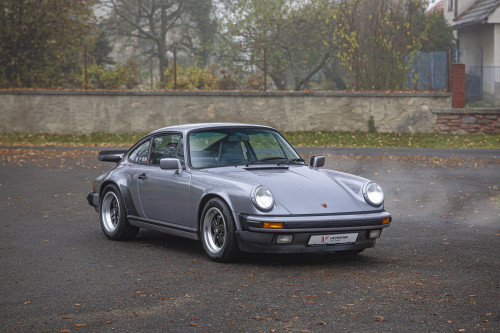A Pinnacle of Bavarian Elegance and Engineering
The early 1970s marked a significant era for automotive design and performance, and the 1973 BMW 3.0 CSi stands out as a remarkable example of this golden age. Part of BMW’s E9 series, this elegant grand tourer not only exemplified the brand's engineering prowess but also its dedication to combining luxury with performance. Here, we delve into what makes the 1973 BMW 3.0 CSi a timeless classic.
Design and Aesthetics
The 1973 BMW 3.0 CSi boasts an exterior design that remains iconic to this day. Its sleek, coupe body, designed by Wilhelm Hofmeister, features graceful lines and a low, aggressive stance. The car's front end is dominated by the signature kidney grilles, flanked by dual round headlights that give it a distinct and purposeful look. The long hood, flowing roofline, and short rear deck create a balanced and aerodynamic profile that exudes both elegance and sportiness.
Chrome accents and a luxurious, minimalist interior further enhance the car's sophisticated appeal. Inside, the 3.0 CSi offers a driver-centric layout with high-quality materials, including wood trim and premium leather upholstery. The large, clear gauges and ergonomic controls ensure an engaging driving experience while maintaining a sense of refinement.
Performance and Engineering
Under the hood, the 1973 BMW 3.0 CSi is powered by a 3.0-liter inline-six engine, a staple of BMW’s engineering excellence. This fuel-injected powerplant delivered 200 horsepower before the upgrade to current 274 PS, providing robust performance for the era. The engine was paired with a 4-speed manual transmission, but is upgrated with a 5-speed manual Sportgetrag, catering to different driving preferences.
The 3.0 CSi's performance is not just about power; it’s also about balance and handling. The car features a well-tuned suspension system that offers a smooth ride without compromising on agility. Its precise steering and well-balanced chassis make it a joy to drive on both winding roads and long highway stretches. The four-wheel disc brakes ensure reliable stopping power, adding to the car’s safety and performance credentials.
Legacy and Impact
The 1973 BMW 3.0 CSi is more than just a beautiful car; it represents a pivotal moment in BMW’s history. It was one of the models that helped establish BMW as a maker of high-performance luxury cars. The E9 series, particularly the 3.0 CSi, laid the groundwork for future BMW coupes and sedans, influencing the design and engineering of later models, including the renowned 6 Series and the legendary M3.
In motorsport, the E9's racing variant, the 3.0 CSL, known as the "Batmobile" due to its distinctive aerodynamic features, achieved significant success. It dominated the European Touring Car Championship and secured BMW's reputation in the racing world. Although the 3.0 CSi was not the racing model, its performance and style contributed to the homologation requirements for the CSL, cementing its place in automotive history.
Collectibility and Enthusiast Appeal
Today, the 1973 BMW 3.0 CSi is a highly sought-after classic car among collectors and enthusiasts. Its combination of stunning design, impressive performance, and historical significance makes it a prized possession. Well-maintained examples command high prices at auctions, and the car’s appreciation in value reflects its enduring legacy.
Owning a 1973 BMW 3.0 CSi is not just about possessing a piece of automotive history; it’s about experiencing a vehicle that encapsulates the essence of what makes driving a true pleasure. The car’s elegant lines, spirited performance, and rich heritage make it a timeless icon in the world of classic automobiles.
Conclusion
The 1973 BMW 3.0 CSi remains a testament to BMW’s commitment to excellence in design, performance, and innovation. As a quintessential grand tourer of the 1970s, it continues to captivate automotive enthusiasts and collectors worldwide. This car is not just a vehicle; it’s a symbol of an era when driving was about more than just getting from point A to point B—it was about the joy of the journey, the thrill of the drive, and the appreciation of fine engineering.
| Production date | 11/1973 |
|---|---|
| Body Type | Coupe |
| Engine | 3.580 ccm, 274 PS, I6 |
| transmission | Manual |
| Steering | Left Hand Drive |
|---|---|
| Layout | Rear Wheel Drive |
| Color - exterior | Taiga Green |
| Color - interior | Black with Green stitching |
| Miles/Kilometers shown | 63.705 km (2.500 km since restoration) |
|---|---|
| Chassis / VIN | 2213939 |
| Location - Country | Czechia |
| Location - City | Mlada Boleslav |
2-door coupe body type; RWD (rear-wheel drive), manual 5-speed gearbox; gasoline (petrol) engine with displacement: 3580 cm3, advertised power: 201 kW / 270 hp / 274 PS, torque: 355 Nm; characteristic dimensions: outside length: 4660 mm, width: 1670 mm, wheelbase: 2625 mm; reference weights: base curb weight: 1345 kg; top speed: 220 km/h (137 mph) (declared by factory for the original specification)

Písek, Czechia

Písek, CZ

Písek, CZ

Písek, CZ

Písek, CZ

Písek, CZ